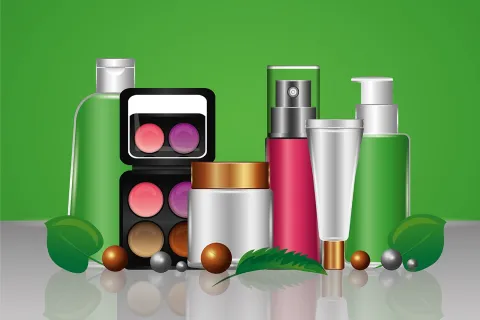
Cosmetic Regulation 1223/2009 imposes various requirements when it comes to placing a cosmetic or personal care product on the European market. Many cosmetic manufacturers and importers sometimes face adversities as they may not be able to keep up and comply with the complex regulations in the EU. Here we explain five (05) critical steps to practice while securing a compliant market entry for a cosmetic product in the EU.
Nominate a Responsible Person (RP)
An RP is a natural or legal person based in the European Community.
Responsibilities of an RP
- Acts as the first point of contact with the Health Authorities (HA), as the HA turn to the RP for any product-related information
- Takes responsibility for product information data files for ten (10) years after the last batch of the product is on the market
- Ensures the products are safe to use and market
- Analyses product claims and substantiation
- Proceeds with cosmetovigilance mandates
Controlling the Product's Composition
The next step would be to validate the cosmetic products formula or ingredient composition to confirm whether the product is safe to use and market in the EU as every ingredient may have a different Regulatory status. The ingredients are divided into three (03) categories:
a. Prohibited Ingredients - Annex II of Regulation 1223/2009 classifies these prohibited substances.
b. Restricted Ingredients
The Cosmetic Regulation's Annex III has a list of these compounds. Only the conditions listed in the appendix allow these compounds to be used in cosmetic products (product type, purity criteria, percentage of maximal use, etc.).
c. Allowed Ingredients
The Regulation specifies three (03) purposes for ingredients: colorants, conservative agents and UV filters.
- Permitted colorants are mentioned in Annex IV of the Cosmetic Regulations (153 of them)
- Conservative agents are permitted and are identified in Annex V (59 of them)
- UV filters that are permitted are listed in Annex VI (29 of them)
- These substances are permissible as long as they adhere to the regulations
Curate the Product Information File (PIF)
The PIF must be made available to the Authorities at all times so that they can refer to the information (electronic or paper). Even for cosmetics placed on the market prior to the enforcement of Regulations, the PIF must be documented and kept (2013).
Product Information File (PIF) should be inclusive of:
- Product information that is kept for ten (10) years (from the date when the last batch of the cosmetic product was placed on the market) by the RP
- All the data should be kept in an electronic or paper format
- Content should be written in an easily understandable language for the HAs of the Member States, where it is going to be archived
What Must Be Included in the PIF?
- Product description of the cosmetic product to help the HA understand whether the product is safe to use.
- Product Safety Report that examines the safety of the products for human use. The product safety report should also be filled in accordance with Annex I of the cosmetic regulations.
Two Distinct Parts
Part A – Data Concerning the Safety of the Cosmetic Products
This section collects the information needed to identify and quantify the hazards that the product may pose to human health based on the identified risks. The information will also include raw materials, production processes, packaging, product use circumstances, microbiology, quantity used, toxicological profiles of the compounds and so on. One must collect the following information on the product's quantitative and qualitative components
- Data about the cosmetic product's chemical and physical properties, as well as its stability
- Microbiological standards
- Impurities, traces, and data about the packing material
- Usage that is common and relatively predictable
- Chemical poisonings
- Substance-related exposure
- Toxicological profile of substances used in cosmetics
- Adverse and serious effects
- Information on the cosmetics
Part B –Safety Assessment of the Cosmetic Products
- Evaluation conclusion: A recommendation for the cosmetic product's safety
- Label warnings and usage instructions
- Scientific rationale: for each cosmetic product, made on a case-by-case basis, verification of the presence of all required data, and appraisal of these data by an expert who analyses the data's significance
- Reference of the person in charge of the assessment and approval: Inclusive of the name, address of the person in charge of the safety assessment, date and signature, etc
Good Manufacturing Practices (GMP)
GMPs are based on ISO standard 22716, published in 2007 and contains criteria for the production, storage and shipment of cosmetic items. A description of the manufacturing circumstances and a declaration of conformance with ISO 22716 Good Manufacturing Practices must be included in the PIF.
Claim Substantiation
Claims must adhere to Regulation No. 655/2013, which was written particularly for the purpose of filing claims.
Compliant labels
All cosmetic products should adhere to the following checklist in order to fully comply with the labeling mandates and to secure a successful market entry.
- Name and address of the RP
- Country of origin
- Nominal content
- Date of minimum durability or period-after-opening
- Precautions & warnings
- Batch number
- Product function
- Ingredients list
*Translation into the export country's language is required. Austria, Bulgaria, France, Poland, Portugal, and Slovakia all require a complete label translation, including marketing content and claims.
Notify the European Commission via the CPNP portal
The European Parliament and the Council of Cosmetic Products created the CPNP online notification portal to enforce Regulation (CE) No 1223/2009. Regulation No 1223/2009 necessitates that any company willing to place a cosmetic product on the market should notify their product online before doing so in the first go.
Regulatory Requirements for Submitting via CPNP Portal
- Name and category of the product
- The name, address and contact details of the RP
- In case the product is imported the country of origin should be mentioned
- First country where the product will be introduced in the market
- The presence of nanomaterials and CMR substances
- Cosmetic product’s formulation
- A compliant label with photo of the external packaging (if legible)
The five steps outlined here are all required to verify that your cosmetic products comply with the European regulations and are ready to be placed on the market. Keeping abreast with various cosmetic regulations can be challenging. For Regulatory assistance on cosmetics market-entry, consult Freyr.









